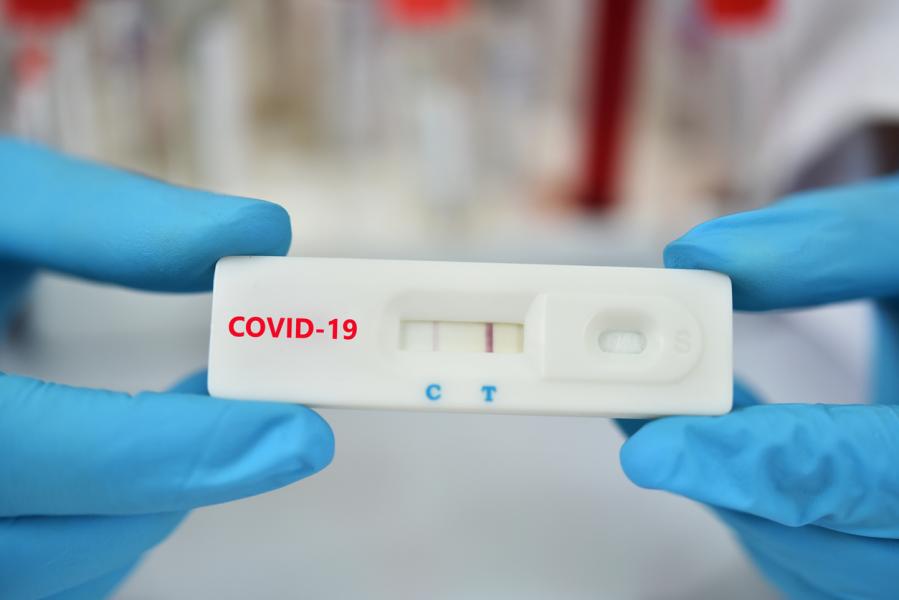
Lateral flow tests are designed to detect the presence of COVID-19. The test works by taking a small sample of saliva and applying it to a strip. If the person has Covid-19, the visible line on the strip will indicate that.
Lateral flow tests are quick and easy to use and can provide results within minutes. However, they are not as accurate as PCR tests. Lateral flow tests may also give false-positive results, meaning that some people who do not have Covid-19 may test positive.
If you have a positive result from a lateral flow flex covid test, it is important to self-isolate immediately and contact your local health authority for further guidance.
Table of Contents
Flowflex COVID-19 Antigen Home Test Kit
The Flowflex COVID-19 Antigen Home Test Kit is a lateral flow test that can be used to detect the presence of Covid-19 in people who are symptomatic. The kit comes with everything you need to collect your sample and get your results within minutes.
To use the kit, simply collect a small sample of saliva using the provided swab. Then, apply the sample to the strip and wait for the visible line to appear. If the line appears, it means you have Covid-19, and you should self-isolate immediately.
If you do not have symptoms of Covid-19 but think you may have been exposed, you can also use this kit to test yourself. However, it is important to note that the kit is not intended for use in asymptomatic people. If you test positive, you should still self-isolate and contact your local health authority.
Buy Lateral Flow Tests
The Flowflex COVID-19 Antigen Home Test Kit is available for purchase online, and you can order one for yourself.
How to do a rapid lateral flow test
1. Wash your hands thoroughly for 20 seconds with soap and water, or use hand sanitizer.
2. Remove the test from the packaging. There are two parts to the test – a strip of paper (the device) and a plastic tube (the buffer).
3. Carefully snap the tip of the plastic tube at the scored line, use the swab to get a sample from the nose or throat, and put the swab in the liquid solution
4. Holding the tube upright, squeeze all of the liquid from the tube onto the paper
5. Carefully place the paper on a level surface, making sure that the liquid does not touch anything else.
6. Wait for 20-30 minutes without moving the paper. Do not read the results before the time is up.
7. Check the results by looking at the two lines on the paper.
8. Contact your local health authority if you have a positive result from this test.
So, what types of COVID-19 tests are available, and how do you decide which one to get? This depends on a number of factors, including your location, symptoms, and time of year. In some states, there are mandatory COVID-19 tests available. There are also other COVID-19 tests you can take if you want to ensure you’re protected, and the only way to do that is to have all of your tests negative.
Types of COVID-19 testing
There are two main types of COVID-19 tests: diagnostic and antibody. A diagnostic test can tell you if you currently have an infection, while an antibody test can tell you if you’ve had an infection in the past.
PCR (polymerase chain reaction) is the most common type of diagnostic test. It involves taking a swab from your nose or throat and sending it to a lab for further analysis. PCR tests can take a few days to get results back, but they’re very accurate.
Antigen tests are another type of diagnostic test. They work by looking for pieces of the virus in your body. Antigen tests are less accurate than PCR tests, but they can give you results more quickly.
There are also antibody tests available. The most common type of antibody test is the lateral flow test, which you can do at home. Lateral flow tests are not as accurate as PCR tests, but they’re quick and easy to use.
What to do if you get tested positive for COVID-19?
If you get a positive result from any COVID-19 test, it’s important to take action right away. This includes self-isolating yourself from other people and contacting your local health authority for further guidance. It’s also important to remember that not everyone who tests positive for COVID-19 will actually have the virus.
There are many things you can do to protect yourself and others from the spread of COVID-19. Some of these steps include washing your hands regularly, covering your nose and mouth when you sneeze or cough, and avoiding close contact with people who are sick.
What to do if you get tested negative for COVID-19?
If you get a negative result from any COVID-19 test, it’s important to continue taking steps to protect yourself and others from the virus. This includes washing your hands regularly, covering your nose and mouth when you sneeze or cough, and avoiding close contact with people who are sick.
What is the best way to prevent the spread of COVID-19?
The best way to prevent the spread of COVID-19 is to take steps to protect yourself and others. This includes washing your hands regularly, covering your nose and mouth when you sneeze or cough, and avoiding close contact with people who are sick.
Rapid lateral flow test – The Bottom Line
The rapid lateral flow test is a quick and easy way to test for COVID-19. It’s not as accurate as other tests, but it’s a good option if you want a quick result. It’s important to remember that not everyone who tests positive for COVID-19 will actually have the virus. There are many things you can do to protect yourself and others from the spread of COVID-19. Some of these steps include washing your hands regularly, covering your nose and mouth when you sneeze or cough, and avoiding close contact with people who are sick.





